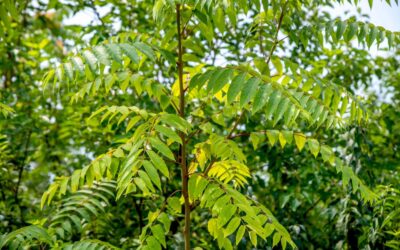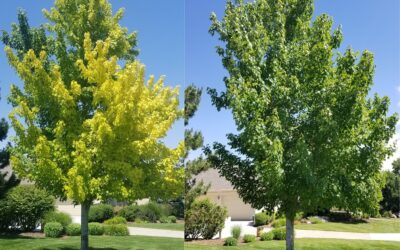The Horse Chestnut is a medium-growing deciduous tree that’s excellent for shade or as an accent in large yards or open spaces. This Southeastern Europe native has become fully Americanized and is seen throughout the country in parks and on golf courses and college campuses. It likes sun and moist, deep, well-drained soil, but adapts to most other conditions and is fairly drought-tolerant. It’s one of the first trees to leaf out and bloom in early spring.
Inedible Fruits, Moderately Toxic Nuts
The Horse Chestnut is not a true chestnut; it’s related to the Ohio Buckeye, and like the Buckeye, its fruits are inedible, but its moderately toxic nuts are used for herbal extracts and other craft and commercial purposes. Its name comes from a common, but mistaken, belief that it cured chest ailments in horses. In fact, Horse Chestnuts are toxic to horses, but squirrels, deer and other forest creatures are able to break down the toxins and eat the nuts safely.
Famous Tree Comes to America
One Horse Chestnut tree in the center of Amsterdam became a celebrity when it was mentioned in Anne Frank’s diary. When a heavy wind blew it over in 2010, eleven young trees that had sprouted from its seeds were brought to the U.S. After a quarantine to make sure they were disease-free, the trees were sent to new homes at prominent places across the country like the 9/11 Memorial Park in New York City and two Holocaust Centers. One remains outside the Children’s Museum in Indianapolis, where they first arrived.
Growth, Foliage, Flowers, Fruits and Bark
A fast-grower in its youth (18-24” per year), it slows down as it matures, reaching a height of 40-60 feet with a spread of 25-50 feet in diameter. It has large leaf clusters of about 7 oblong leaflets 4-6 inches long with pointed tips. Its leaves are dark green towards the top and lighten on lower branches, turning yellow-brown in the fall. The Horse Chestnut produces showy 5-8-inch creamy white upright flower clusters that turn red with age. The fruits are thick and spiny with 1-3 brown seeds inside. It develops exfoliating bark as it ages, revealing new orange bark beneath.
Hardiness, Disease-Tolerance and Maintenance Level
While established trees can stand up to all but severe droughts and are hardy in Zones 3-7, sun scorch and foliar diseases can cause leaves to brown under stress. Horse Chestnuts are susceptible to bacterial and fungal infections, but treatment is generally effective. Leaf miners can attack them, but attacks are usually late in fall and don’t affect the tree’s health. Falling nuts and twigs call for a degree of maintenance with lawn plantings. There are several hybrids and cultivars of the Horse Chestnut, including the “Baumanni” cultivar that has double white flowers that don’t produce nuts, cutting down on litter problems.
To learn more about the Horse Chestnut and find out if this tree is right for your Colorado space, give Paul a call at 303-623-8733 for a conversation and free estimate to plant or transplant one in your outdoor area.



